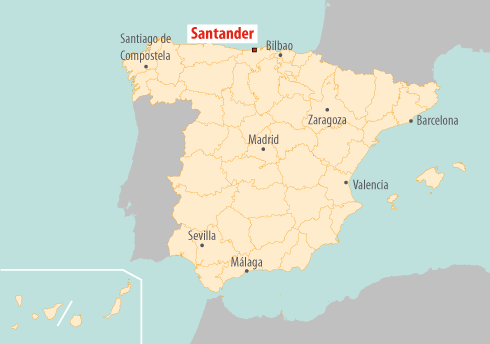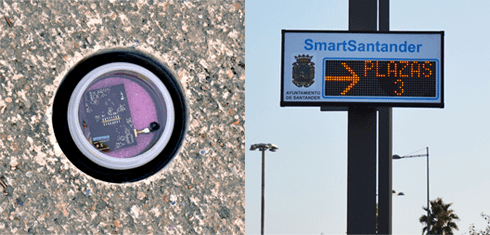Alrededor del 75% de la población de la Unión Europea ha elegido las zonas urbanas como lugar de residencia. El concepto de ciudad inteligente como próxima etapa de la urbanización ha ganado terreno entre los responsables políticos, lo que ha dado lugar a inversiones en capital humano y social, gestión de recursos y nuevos avances en sostenibilidad medioambiental. Las ciudades inteligentes pueden considerarse ecosistemas, aunque con un alto componente técnico. Este tipo de metabolismo urbano es un sistema abierto y dinámico que consume, transforma y libera materiales y energía, se desarrolla y adapta a los cambios e interactúa con los seres humanos y otros ecosistemas.
Contaminación atmosférica perjudica la salud humana y el medio ambiente. A pesar de que las emisiones de los automóviles y la industria han disminuido en los últimos años, las concentraciones de contaminantes atmosféricos siguen siendo elevadas y persisten los problemas de calidad del aire. Una parte importante de la población europea vive en zonas -sobre todo ciudades- donde las normas de calidad del aire han superado los límites de emisión de varios contaminantes atmosféricos: la contaminación por ozono, dióxido de nitrógeno y partículas (PM) entraña graves riesgos para la salud. El peligro es local, regional y también internacional, ya que la contaminación atmosférica emitida en un país puede ser transportada a grandes distancias por la atmósfera hasta otros lugares, provocando allí una mala calidad del aire.
Ruido ambiental también afecta a un gran número de europeos y la opinión pública lo percibe como uno de los principales problemas medioambientales. Puede afectar a las personas tanto de forma fisiológica como psicológica, interfiriendo en actividades básicas como el sueño, el descanso, el estudio y la comunicación.

En respuesta a la demanda ciudadana e impulsado por tres aspectos principales de la gobernanza, se está imponiendo un nuevo concepto de ciudad para ofrecer una mejor calidad de vida a los ciudadanos, minimizar el impacto ambiental y reducir costes. El sitio
Escenario de aparcamiento es uno de los problemas más importantes presentes en una ciudad en el que intervienen los tres factores. En todo el mundo, la contaminación atmosférica y las carreteras congestionadas deprecian la calidad de vida, lo que se traduce en pérdida de tiempo para los conductores y despilfarro de combustible. La Comisión Europea calcula que las pérdidas económicas debidas a los retrasos del tráfico ascienden a 150.000 millones de euros al año en Europa. La necesidad de buscar
aparcamiento es un factor importante de la congestión generalizada y una de las principales causas de estrés para los automovilistas. Según cálculos realizados en Barcelona (España), un millón de conductores pasan una media de 20 minutos al día buscando aparcamiento, lo que produce 2.400 toneladas de emisiones de CO2.
Proyecto Smart Santander
SMART SANTANDER
proyectoque ha sido desarrollado por varias empresas e instituciones, entre ellas Telefónica I+D y
Universidad de Cantabriatiene como objetivo diseñar, desplegar y validar en Santander y su entorno una plataforma compuesta por sensores, actuadores, cámaras y pantallas para ofrecer información útil a los ciudadanos. 1125
Waspmotes se han desplegado para controlar diferentes parámetros como el ruido, la temperatura, la luminosidad, el CO y el libre
aparcamiento ranuras.

Fig. 1. - Ubicación de SmartSantander
Único en el mundo, SmartSantander es realmente una instalación experimental de investigación a escala de ciudad en apoyo de las aplicaciones y servicios típicos de las futuras ciudades inteligentes. Esta excepcional instalación experimental es lo suficientemente grande, abierta y flexible como para permitir la federación horizontal y vertical con otras instalaciones experimentales y estimular el desarrollo de nuevas aplicaciones por parte de diversos tipos de usuarios, incluida la investigación experimental avanzada sobre las tecnologías de la Internet de las Cosas (IoT), basada en la evaluación realista de las pruebas de aceptabilidad de los usuarios. El proyecto prevé el despliegue de 20.000 sensores en las ciudades europeas de Belgrado, Guildford, Lübeck y Santander (12.000), explotando una amplia gama de tecnologías.
En este artículo nos centraremos en el despliegue de Santander. Si desea saber más sobre el despliegue en Belgrado, visite este enlace
estudio monográfico.
La Solución
Este proyecto puede explicarse mejor con el siguiente diagrama, que muestra los nodos, las redes creadas y su conexión a la nube.
Uno de los principales retos con los que nos encontramos durante el proyecto SmartSantander fue el desarrollo de la Programación en el Aire (OTAP) necesaria para programar todos los nodos de forma inalámbrica y remota. Libelium colaboró con la Universidad de Cantabria para mejorar el sistema OTAP, creando una red más robusta que se puede actualizar en cualquier momento y desde cualquier lugar.
En este proyecto se instalaron 1.125
Waspmotes en distintos puntos de la ciudad de Santander para medir cinco parámetros diferentes:
- Temperatura
- Luminosidad
- CO
- Ruido
- Plazas de aparcamiento gratuitas
Estos cinco sensores se conectan al Waspmote a través de las tarjetas Gases Sensor Board (sensor de CO), Parking Sensor Board (aparcamiento), Smart Cities Sensor Board (sensor de ruido) o directamente al Waspmote (temperatura y luminosidad).
Cada sensor dispone de dos radios para comunicarse a 2,4 GHz (excepto los sensores de aparcamiento). En un extremo de la comunicación, DigiMesh es el protocolo seleccionado para enviar la información ambiental. Por otro lado, se utiliza el protocolo IEEE 802.15.4 para realizar experimentos dentro de la red. Todos los nodos de la red SmartSantander pueden utilizarse para probar nuevos algoritmos sin tiempo de inactividad, mientras los ciudadanos siguen recibiendo información sobre su entorno.
Si alguno de estos cinco parámetros supera un determinado umbral, el sistema analiza la información y puede reaccionar enviando una alarma al nodo central (la pasarela inalámbrica,
Meshliumen este caso). Para saber dónde se encuentra un sensor, cada Waspmote puede integrar un sistema de posicionamiento global (GPS) que proporciona información precisa sobre la posición y la hora.
Libelium ofrece varios módulos inalámbricos para el
comunicación por radio:
|
Modelo
|
Protocolo
|
Frecuencia
|
Potencia TX
|
Sensibilidad
|
Gama*
|
|
XBee-802.15.4
|
802.15.4
|
2,4 GHz
|
1 mW
|
-92 dB
|
500 m
|
|
XBee-802.15.4-Pro
|
802.15.4
|
2,4 GHz
|
63 mW
|
-100 dBm
|
7000 m
|
|
XBee-ZigBee
|
Zigbee-Pro
|
2,4 GHz
|
2 mW
|
-96 dBm
|
500 m
|
|
XBee-ZigBee-Pro
|
Zigbee-Pro
|
2,4 GHz
|
50 mW
|
-102 dBm
|
7000 m
|
|
XBee-868
|
RF
|
868 MHz
|
315 mW
|
-112 dBm
|
12 km
|
|
XBee-900
|
RF
|
900 MHz
|
50 mW
|
-100 dBm
|
10 km
|
|
XBee-XSC
|
RF
|
900 MHz
|
100 mW
|
-106 dBm
|
12 km
|
Fig. 4. - Distancia alcanzada en función del protocolo
Podemos alcanzar hasta 40 km en condiciones de Línea de Vista (LOS) utilizando el módulo de 868MHz. El alto rendimiento del Waspmote hace que las lecturas sean realmente precisas y que la transmisión sea altamente fiable y flexible, situando los nodos a una separación media de 1,5 km.
También es posible transmitir los datos a través de GPRS/3G, como módulo de radio secundario para una mayor disponibilidad y redundancia en situaciones en las que es fundamental garantizar la recepción del mensaje, como en el caso de las alarmas contra incendios. Dado que el módulo GPRS/3G es cuatribanda, puede funcionar en cuatro bandas de frecuencia diferentes y es compatible con cualquier proveedor de conexión celular, por lo que puede funcionar en todo el mundo. De este modo, el proyecto que describimos es apto para cualquier país.
Una de las principales características del Waspmote es su bajo consumo de energía:
- 9 mA, modo ON
- 62 μA, modo de espera
- 0,7 μA, modo de hibernación
Para ahorrar batería, el Waspmote pasa la mayor parte del tiempo en modo reposo. Después de unos minutos (programables por el usuario), Waspmote se despierta, lee de los sensores, implementa la comunicación inalámbrica y pasa de nuevo al modo de reposo.
Proceso de implantación
El despliegue de la red de sensores inalámbricos se llevó a cabo mediante
IDOM y
TTI Nortedos empresas españolas especializadas en telecomunicaciones e ingeniería. Primero se hizo un estudio de cobertura para saber dónde colocar los sensores y repetidores para maximizar el área cubierta por el proyecto. El estudio de cobertura dividió la ciudad en 22 zonas diferentes.
Cada zona tenía una pasarela inalámbrica Meshlium para recoger los datos de los sensores: el número de sensores dependía del área a cubrir. El proceso consistió en desplegar zona por zona, para crear redes independientes que funcionaran en canales de frecuencias diferentes sin que se produjeran interferencias entre ellas.
En primer lugar, se calibraron los sensores para comprobar la precisión de sus resultados. Una vez calibrados, se sometieron a pruebas aleatorias para superar el control de calidad de Libelium. Cada nodo se colocó dentro de una caja IP-65 que podía desplegarse en las duras condiciones de la ciudad de Santander.
Los sensores se colocaron en farolas o fachadas de edificios, intentando minimizar el impacto visual en la ciudad. Cada caja contiene el equipo eléctrico necesario para ser conectado a las lámparas de luz sin ningún peligro para las instalaciones públicas. Se conectan a la línea a través de interruptores diferenciales y fusibles para evitar problemas eléctricos. Un transformador adapta la corriente y la tensión para alimentar los nodos.
Por otro lado, los Waspmote se desplegaron en diferentes ubicaciones de la ciudad de Santander, midiendo el campo magnético para detectar si una plaza de aparcamiento está libre. El sensor de campo magnético se conecta a los Waspmote a través de la Smart Parking Sensor Board. Estos sensores detectan la variación del campo magnético generado por un coche aparcado sobre él. Para ello, el sensor se entierra bajo la superficie de la calzada dentro de una carcasa impermeable. El agujero se cierra con un material específico y apenas es detectable a simple vista.

Fig. 8. - a) Waspmote enterrados bajo la calzada b) Pantallas para indicar las plazas de aparcamiento libres
Cada Meshlium recoge los datos de todos los sensores de su zona, los almacena en una base de datos MySQL y envía la información a Internet a través de una conexión 3G o Ethernet. Los Meshlium se colocan en la parte superior de los edificios para maximizar el área cubierta.
Como resultado de esta instalación, se pueden monitorizar los parámetros medioambientales para su posterior estudio y los ciudadanos también pueden conocerlos gracias a los mapas en tiempo real disponibles para su visualización. Además, los
SmartSantander es una red de experimentación a gran escala que permite a investigadores de todo el mundo probar distintos algoritmos en un entorno real.
Si está interesado en
Waspmoteestaremos encantados de ayudarle a diseñar su sistema. Puede solicitar una oferta de Waspmote
aquí.
El IoT
Marketplace
Comprar kits
kits IoT

